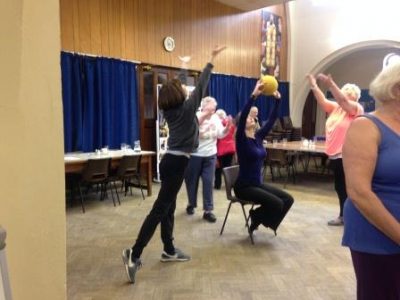Dancing in Time



This is a yearlong programme to deliver three ten-week dance projects for groups of older people who have little access to dance in three different areas of Leeds. The programme was developed following some research into enablers and barriers for older adults to engage in dance. The sessions take place twice a week and are fun and invigorating. The dance involves both structured movement and creative improvisation – with a piece of choreography being developed by the group over the 10 week period, culminating with a performance of the piece to a small group to celebrate their work. In addition to the benefits derived from this physical and musical stimulation, the participants also have an increase in socialization as they have tea and biscuits together following each session.The first two projects are complete, and the third is about to start. The dance projects are taking place at local venues in partnership with Neighbourhood Networks which are local voluntary organisations providing services and activities for older people. The programme has been commissioned by Leeds City Council, and is delivered by Yorkshire Dance working with two professional trained dance artists We will research the impact of dance on the health and wellbeing of older people, especially the impact on their physical activity levels, which is recognized as a primary factor in staying healthy and happy.
Website: http://www.yorkshiredance.com/
Main target group: Older people in general
Desired outcome for older people:
Be mobile
Other Issues: Decline in physical activity and psychosocial activity in older people
Name: Porter, Richard
Email address: richard.porter@leeds.gov.uk
Preferred language(s): English